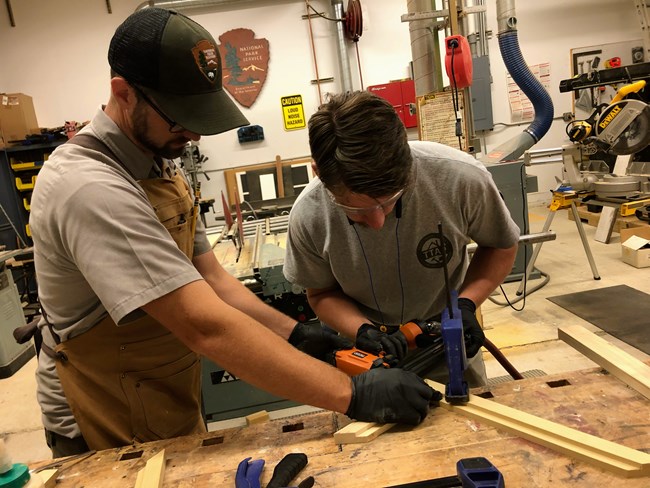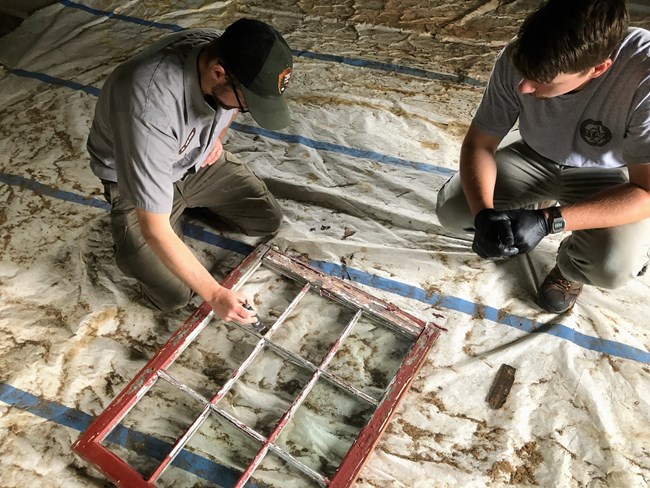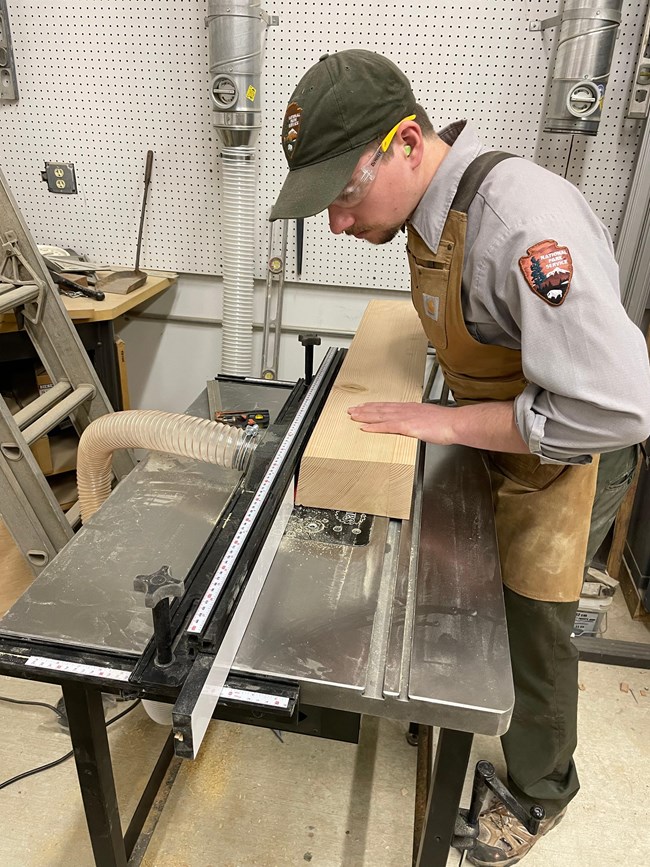Last updated: September 21, 2023
Article
From TTAP to NPS: Ben Lammers

In November 2022, Ben Lammers completed the Traditional Trades Advancement Program under the guidance and mentorship of Mark Wilson, Preservationist at Fort McHenry National Monument and Historic Shrine. Shortly afterwards he became an NPS employee. We caught up with him to hear about his experience in the program, his background, and his work now as an NPS employee.
When were you a part TTAP and where were you based?
I completed my TTAP term at Fort McHenry National Monument and Historic Shrine in Baltimore, MD, and Hampton National Historic Site in Towson, MD. I started my first term in April 2022 and was able to secure a second term that finished in November 2022. Mark Wilson was my park mentor at Fort McHenry and he's a huge reason why I succeeded in the progam.
How did you become an NPS employee?
After completing my first TTAP term, and receiving my PLC hiring status, I applied to a Maintenance Worker Historic Preservation opening at Fort McHenry. Near the end of my second TTAP term I was interviewed for the position, and a couple weeks later I received word of my tentative offer. My first day as a National Park Service employee was in December 2022. I felt very fortunate to begin my park service career at Fort McHenry. I had made many great connections and developed a passion for Fort McHenry and Hampton during my TTAP term. I look forward to continually growing my skills, relationships, and knowledge at these two parks.
How did you first become interested in historic preservation?
From a young age I have been interested in historic preservation. My grandfather fostered this interest by encouraging me to volunteer with him at a local historic site. There I learned the basics of colonial carpentry and masonry techniques alongside him and other volunteers. Later, I became employed by the same historic site and occasionally performed maintenance to their historic structures. At the same time, I was developing my woodworking and carpentry skills through various projects, and volunteering for Habitat for Humanity. I found the work rewarding, and the stories surrounding the buildings and sites captivating. Preservation slowly grew from an interest to a potential career path, and TTAP gave me the opportunity to explore that possibility.

What was one of the coolest projects you worked on in TTAP?
The project I enjoyed most during my in TTAP was the Hampton Corn Crib foundation. The corn crib was lost to a fire in the 1980s. Luckily, the original field stone foundation remains as both a marker and an interpretive resource for staff. The foundation had been in a state of disrepair from mortar failure and vandalism. It needed to be fully repointed and re-laid in some areas, so its restoration took multiple weeks. By the end of the project, I had become very comfortable with many aspects of masonry and was able to guide other maintenance staff in the techniques necessary to complete the foundation project.
How did TTAP influence your career choices?
TTAP allowed me to realize that preservation is an excellent career choice for someone who has interests in different disciplines and activities. My college education allowed me to hone my skills in research and writing, but I also enjoy expanding my trades skills as well. Preservation is an excellent option for someone interested in a multidisciplinary career, where you are constantly learning through both research and hands on trades experience. This unique quality is what has drawn me to a career in preservation, and I see a lot of growth for myself in this field.

How did TTAP help prepare you for your NPS position?
One of the most beneficial ways TTAP prepared me for my NPS position is that it exposed me to the guiding techniques and principles of preservation, especially in the context of the NPS mission. My TTAP term allowed me to realize that preservation is necessary for the longevity of the country's unique cultural resources, and their continual value as a resource for the education and inspiration of those who wish to see them. Without the preservation of these resources, there would be nothing to accompany their stories, and no way to relive the history that makes them valuable aspects of the American, and human experience.
What advice would you give to someone interested in TTAP?
Come into the experience with fresh eyes and ears, and always willing to learn. The team you will be working with will have decades of knowledge, experience, and lessons between them. This makes TTAP an incredible opportunity to build a strong foundation for a preservation career, and affords you the time to observe, ask questions, make mistakes, and learn so much along the way.
To learn more, visit the Traditional Trades Advancement Program page.
